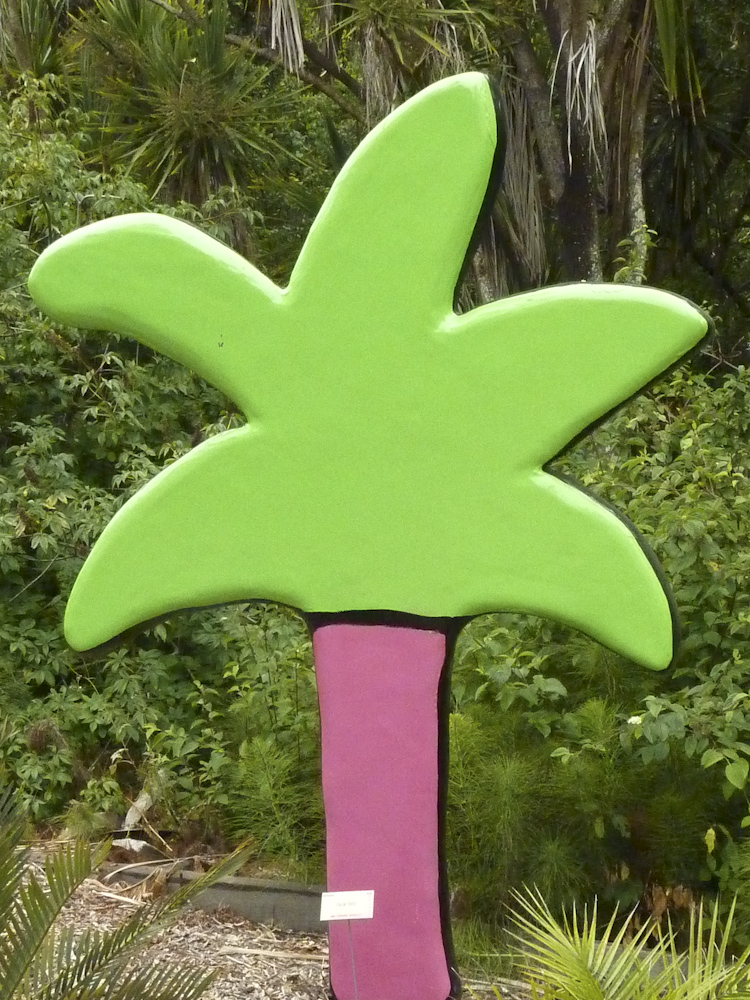
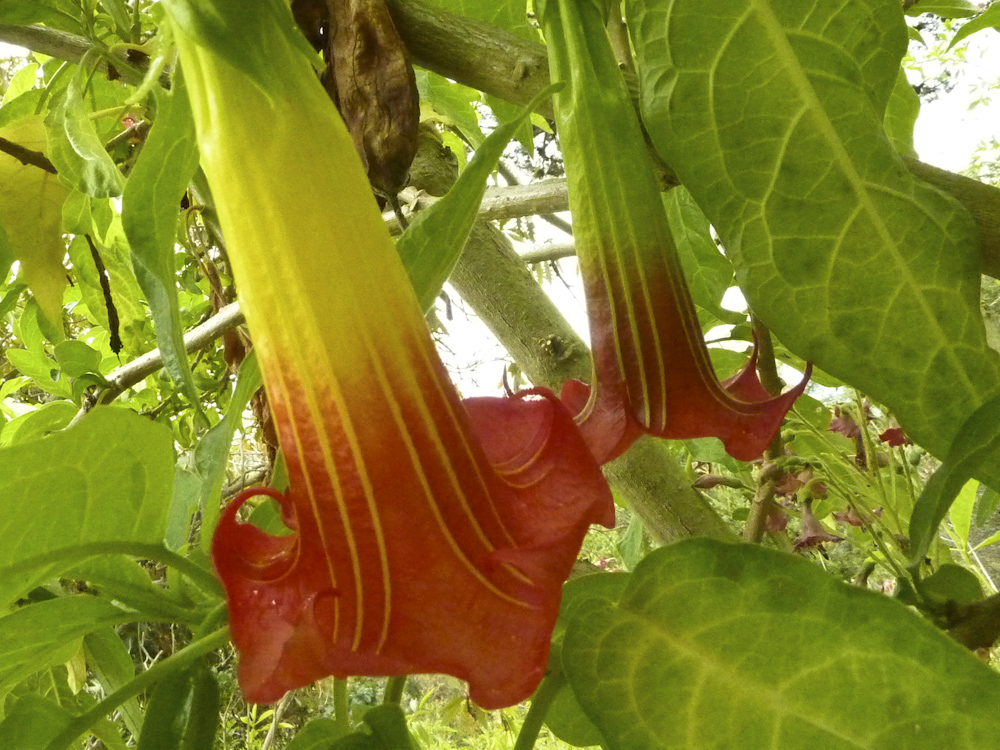
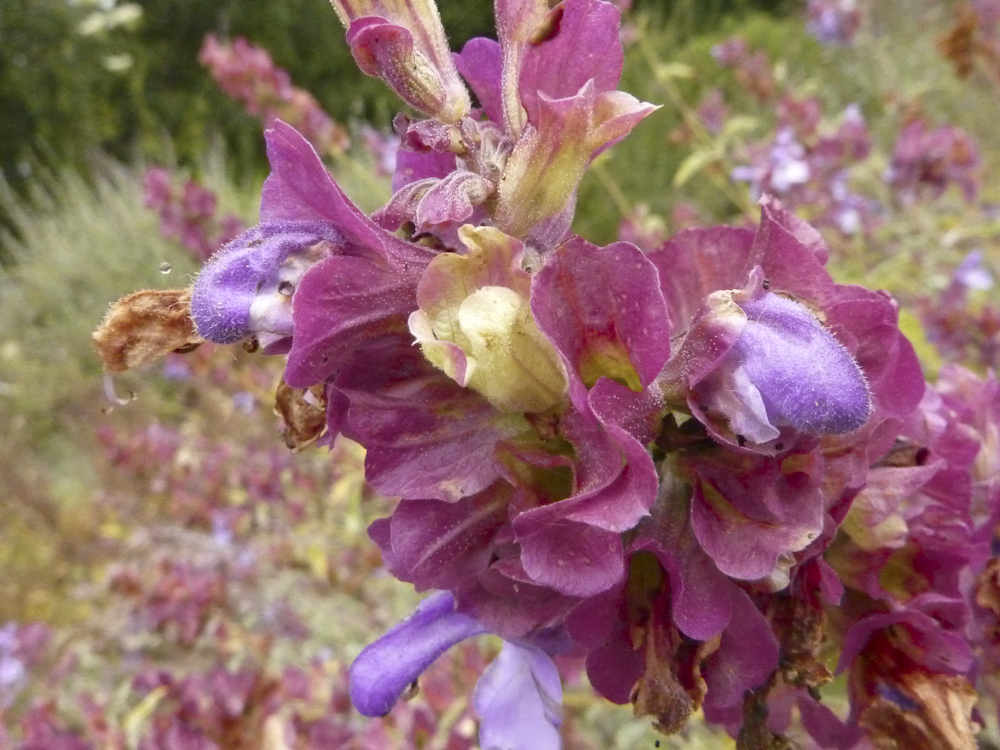
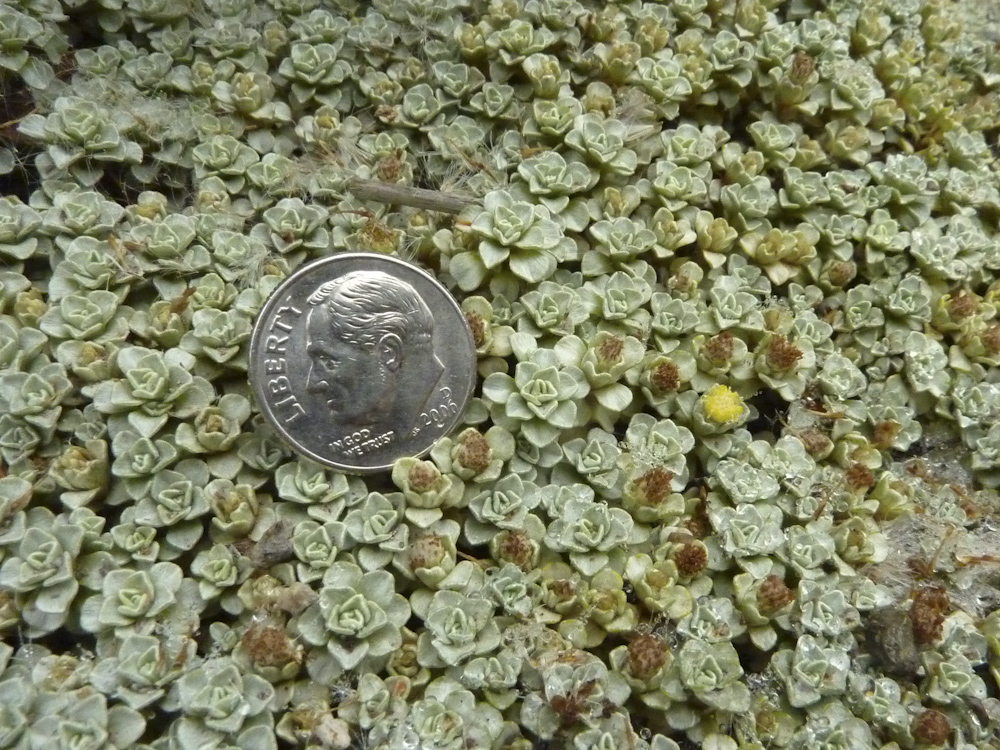
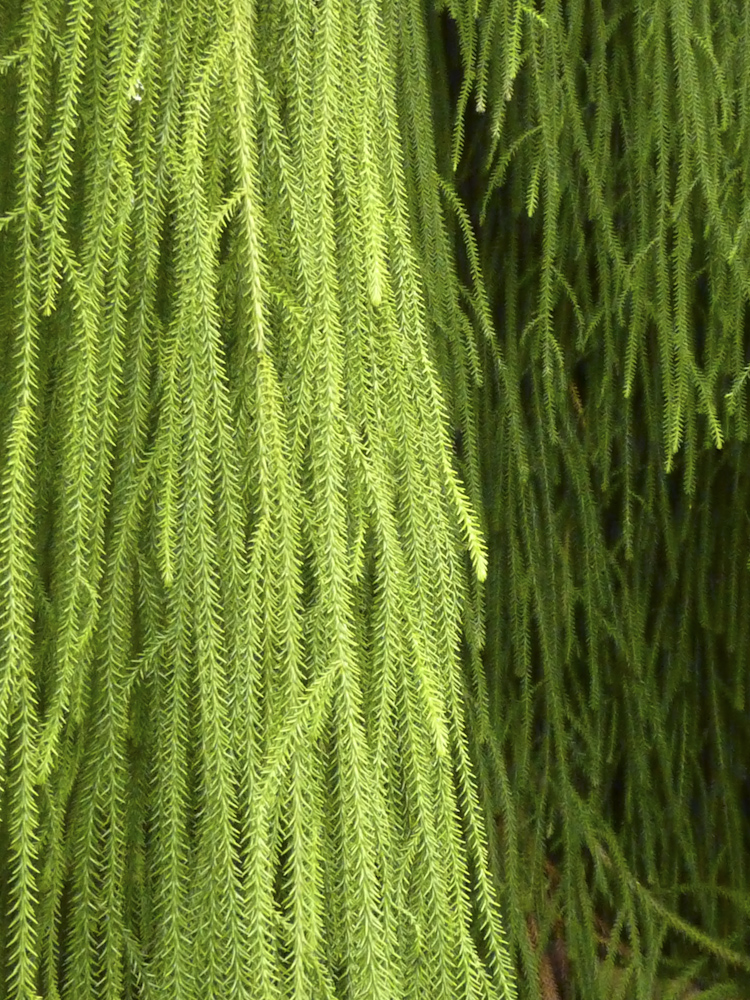
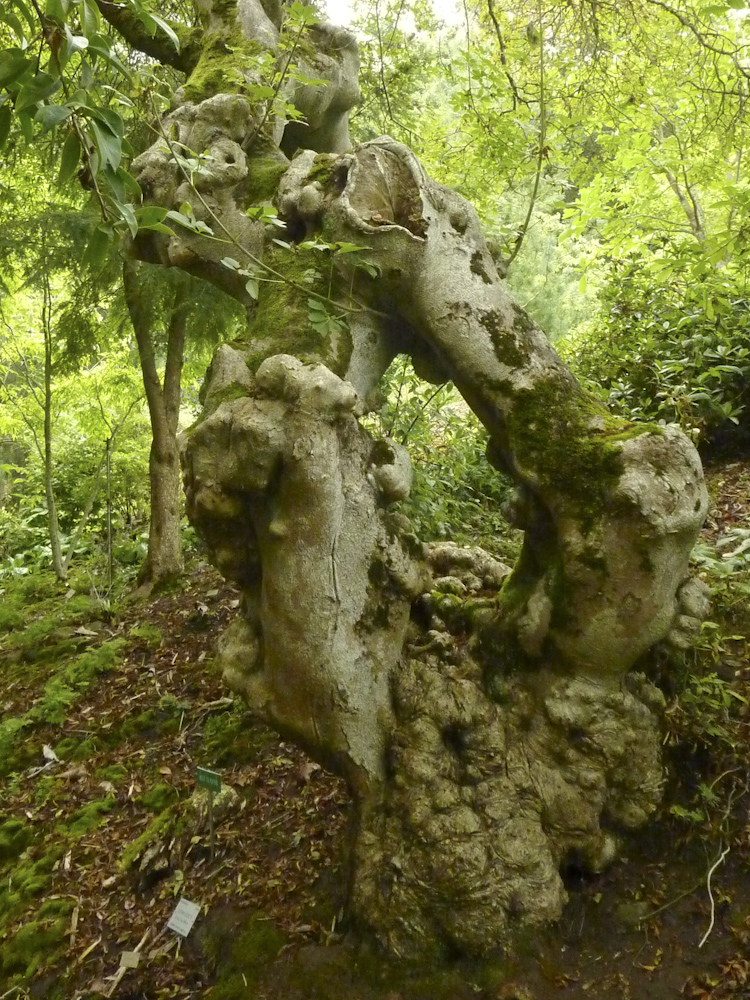
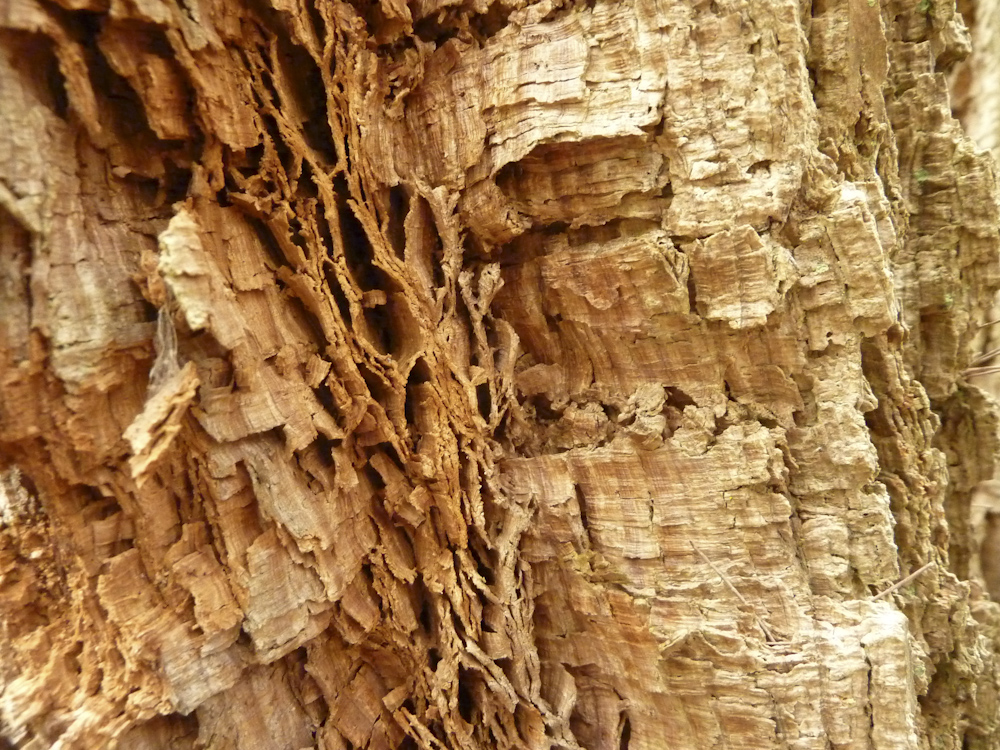
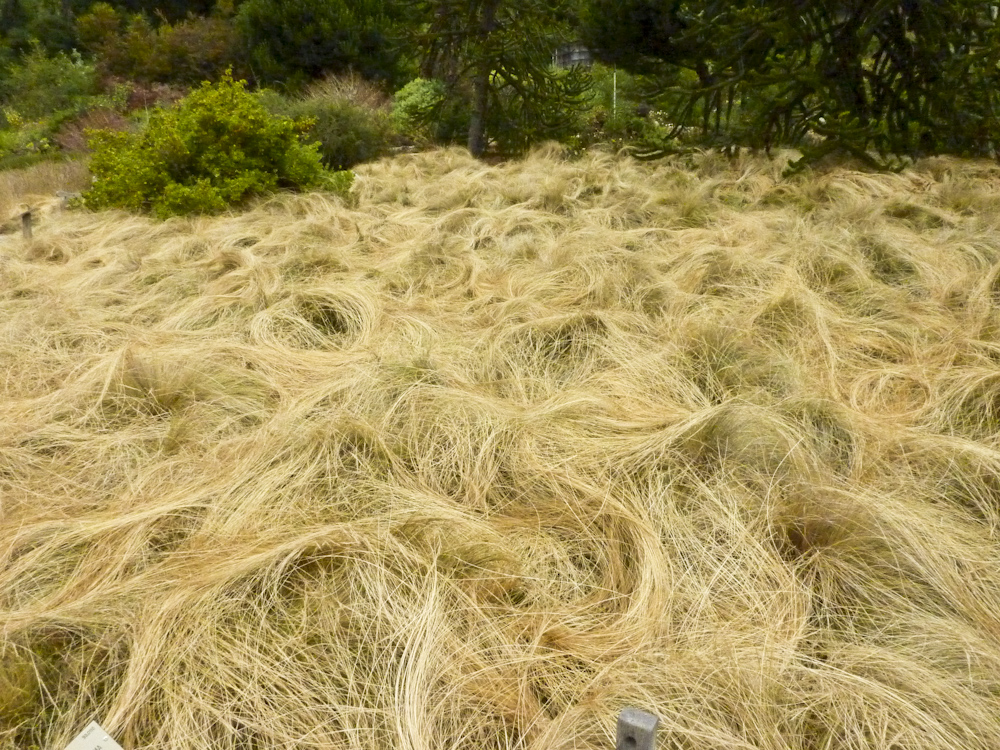
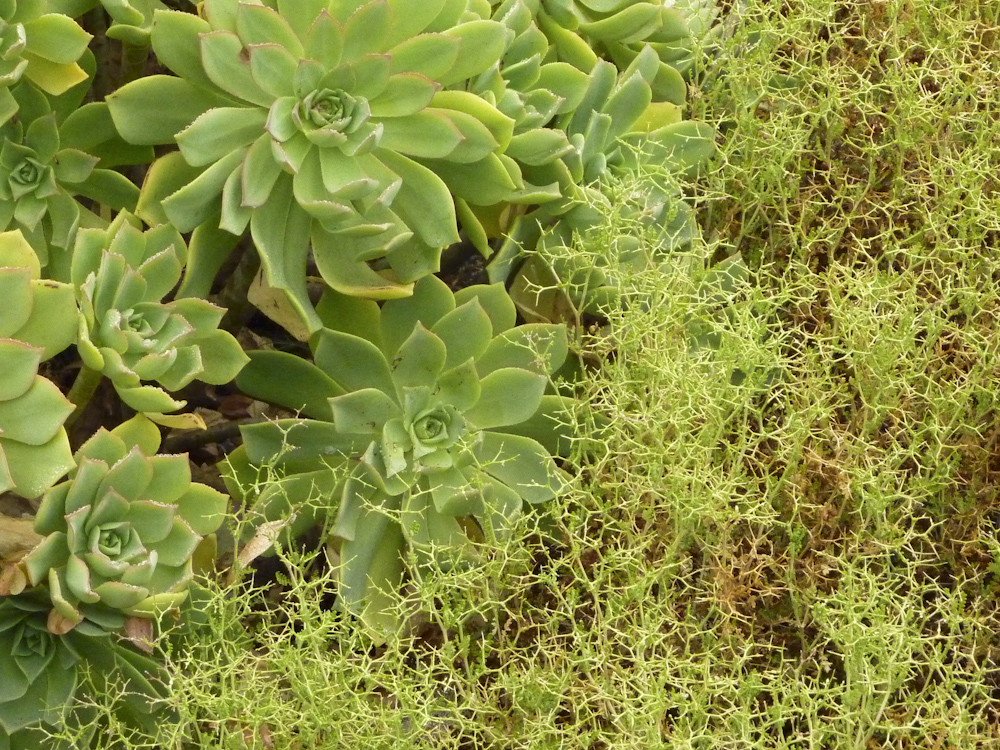
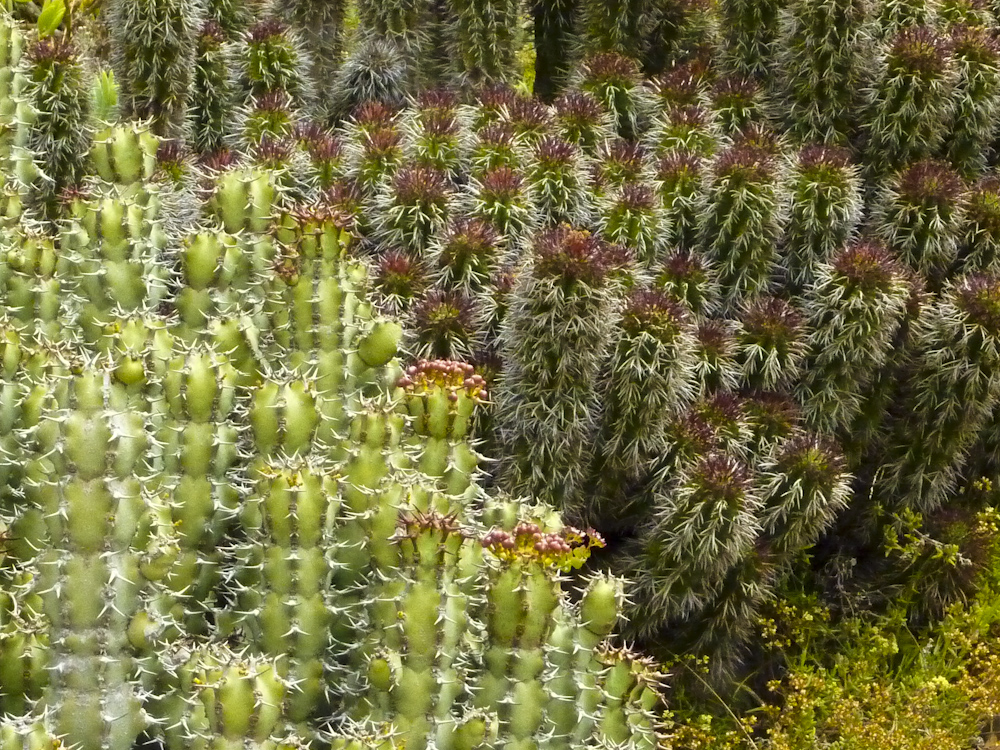

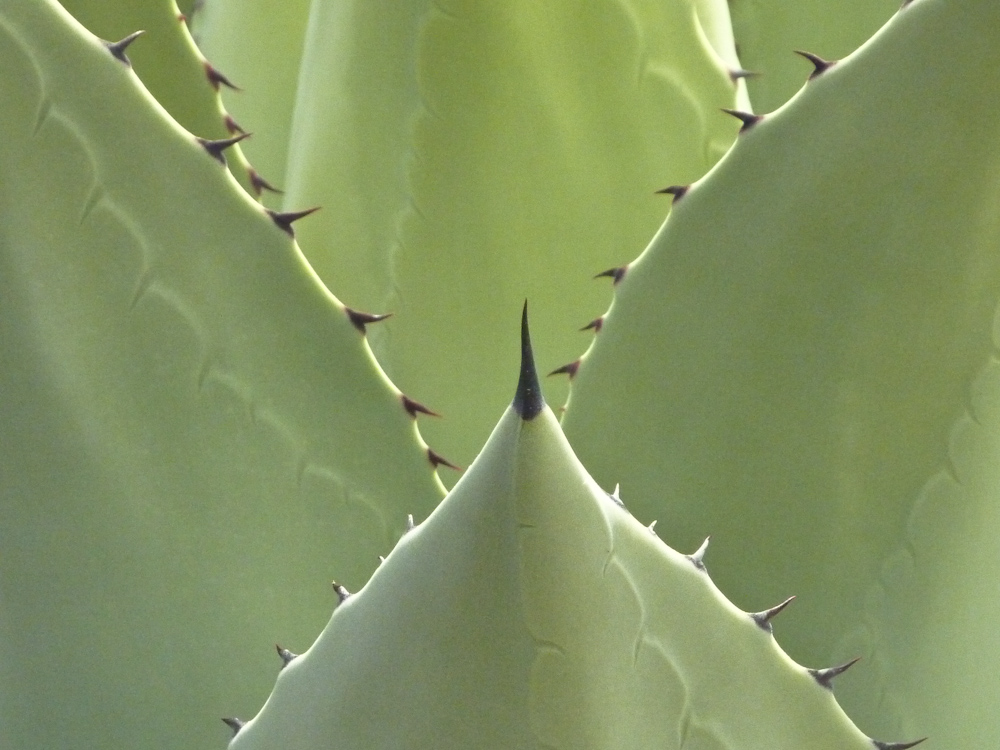
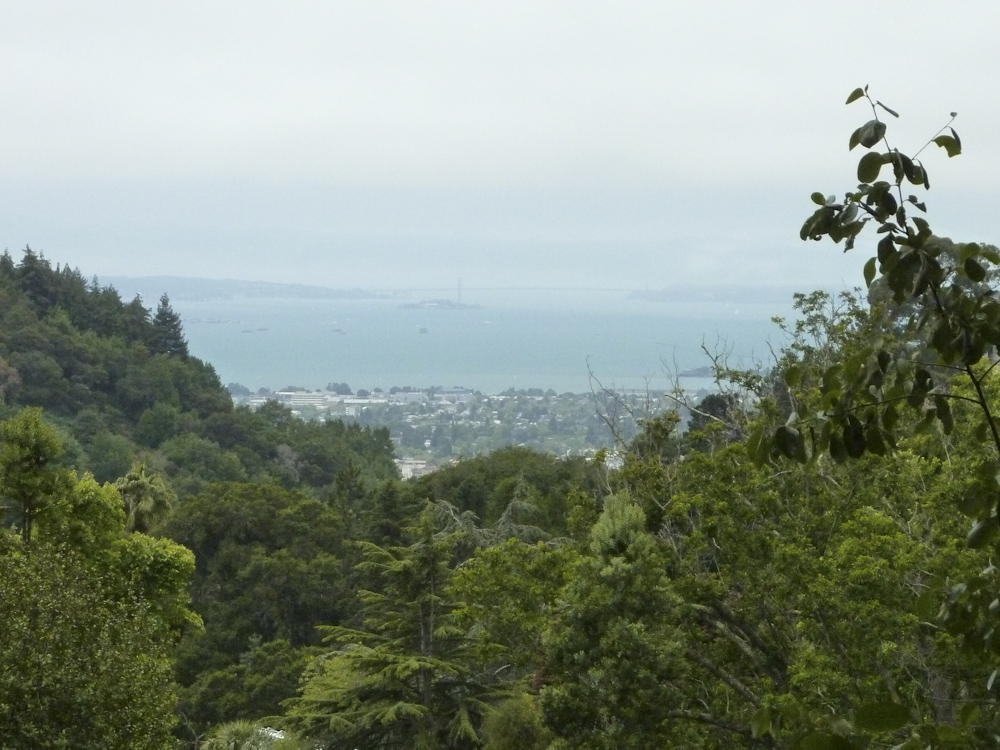
I feel a little guilty telling you that Lin (my spousal support unit) and I spent a few days in San Francisco last week. So many of you were slogging through unrelenting heat while Lin and I were experiencing windshield wiper-thick fog and temps that didn’t make it out of the 60s. It was a last minute jaunt after Lin’s plans to visit relatives in Philadelphia fell through. Good thing for her, cuz it was hot and gummy (that’s “muggy” spelled inside-out) back there and the airlines frown on wedging a 55-gallon drum of baby powder in the overhead.
Thursday was dinner with our friends Pam (we worked in the same landscape architect’s office when I lived in SF) and her hubz, Carl. Fun time chowing down Cuban tapas at Cha-Cha-Cha in the Mission.
Friday was the de Young Museum for The Birth of Impressionism show (must see) and some camera wandering at the SF Botanical Garden. I promise I’ll post a blog from that visit.
But Saturday was the big deal, horticulturally speaking. I’ve heard for years about the legendary 10,000-plus species collection ensconced at the 34-acre University of California Botanical Garden (UCBG) on the Berkeley campus. The main focus of the collection is on plants from the five Mediterranean climate regions: California, South Africa, Chile, southwest Australia/New Zealand, and the Mediterranean basin. But the UCBG also does a heck of a job with plants from eastern North America, Mexico/Central America, Asia and desert regions of the New World.
Lin took off with her camera and I headed into the wilds of the Garden with mine. These images are just a handful of the hundreds I snapped. There’s no theme to the pictures – they’re just the ones that jumped off the monitor.
 |
Comic Trees is the name of a delightful display garden just outside the tropical plant house. Created by Bay Area artist, Ama Torrance, these life-size cartoon trees brought giggles to real kids and big kids like me. The Pop Art-inspired exhibit will be up for the rest of the summer, so here’s your first reason to rush to Berkeley for a visit.
 |
Speaking of kid stuff, how about this rainbow sherbet-colored Brugmansia from the subtropical regions of South America? I’d probably start licking my way from the lemon end toward the orange-flavored opening if it weren’t for the fact that this Solanaceae family member is seriously toxic if ingested.
 |
There were a whole bunch of sages in the Mediterranean region, but this Salvia pomifera ssp. pomifera, from Greece, is one that hypnotized me with its magical spell. I love when a flower comes with a built-in mini design lesson, like this subtle juxtaposition of papery fuchsia-colored bracts with the calming purple petals of the yet unfurled flower. Use these colors in the garden to create a calming place for the eye to rest.
 |
I think there’s still a Ripley’s Believe It Or Not museum at Fisherman’s Wharf, but this common scabweed (Raoulia hookeri) was odd enough to leave me dumbfounded. From a few feet away, this New Zealand native just looked like a mat of teensy, succulent gray-green leaves. When I noticed the sign indicating it was in the sunflower family (Asteraceae), I had to zoom in to find a flower. Sure enough, if you put a full-sized sunflower on your copier and set it at 99.9% reduction, this is what the flower would look like. I wonder what insect pollinates this little cutie.
 |
I shot this picture to capture the way differences in lighting affect the greenness of foliage. Rimu, also known as red pine, (Dacrydium cupressinum) is native to New Zealand and a member of the Podocarpaceae family, a type of conifer. Assuming I could find a few Rimu to use in one of my clients’ gardens, I’d place it as a backdrop for black bamboo. The strong vertical lines and deep shadows would be exquisite.
 |
This California buckeye (Aesculus californica) has nothing to do with China, but I’m guessing no one had the heart to weed this interloper out of the Asian section. Surrounded by camellias, rhododendrons and delicate ground covers, the two main trunks must have grafted themselves together long before the UCBG was moved from the main campus to Strawberry Creek in the 1920s. Some might find it grotesque — I see nature’s infinite creativity.
 |
Back in the Australasian section, the bark of this forest oak (Casuarina torulosa – which is in no way related to real oaks, Quercus genus) reminded me how much I’ve been yearning for anything made with phyllo dough – baklava anyone?
 |
If I didn’t know better, I’d think that environmental artist Andy Goldsworthy had secretly arranged this Nassella laevissima into undulating, blond ringlets. When I mentioned my fascination with this plant to UCBG director, Paul Licht — whom I was fortunate to bump into just before finishing up the garden — he told me that when this Chilean grass flowers in spring, it creates a haze of purple flowers that dance above the plant. Sounds like another good reason to return next year.
 |
This picture is here “just because.” In this bizarre mash-up, I focused on the way the angular tips of the Aeonium leaves and honeycomb pattern from spiny, overlapping branches of Sarcopoterium spinosum caught my attention. Vastly different plants linked by a shared pattern.
 |
Another simple design lesson – Two species of upright, cylindrical Euphorbia share a nearly identical form, but their outward “skin” sets up a pleasing contrast.
 |
This extreme macro-lens close-up captures two clusters of the aptly named hedgehog (Agave stricta) as they avert a collision.
 |
I don’t like to brag, but this photograph is my best of the day. So let’s end with Parry’s agave (Agave parryi), whose delicate, embossed ghostly gray-green leaves overlap in a most pleasing way. And the vicious little black spikes have the decency to announce their presence, just in case you were thinking of getting up close and personal.
If you’re in the Bay Area and a lover of plants, skip the crass commercialism of Fisherman’s Wharf and treat yourself to a short jaunt to the Berkeley hills in the East Bay. If you live in the area, pull out your credit card and become a member of the University of California Botanical Garden. They put on fabulous programs for all ages. If I find the Fountain of Youth, I’m scamming a fake ID so I can enroll in the kid’s papyrus-making class that was in full gear when we visited.
Aside from the overwhelming variety of beautiful, bizarre and fascinating plants you’ll experience, take a moment to look up, take a deep breath and soak in the stunning view across the bay.
 |
Fine Gardening Recommended Products

A.M. Leonard Deluxe Soil Knife & Leather Sheath Combo
Fine Gardening receives a commission for items purchased through links on this site, including Amazon Associates and other affiliate advertising programs.

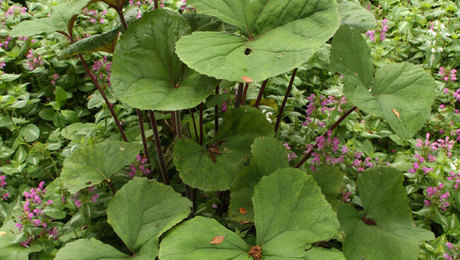

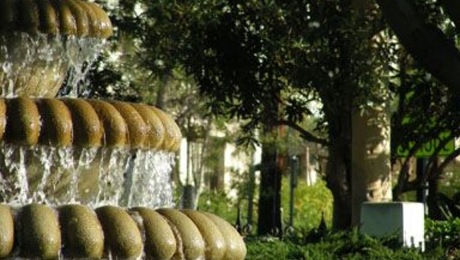


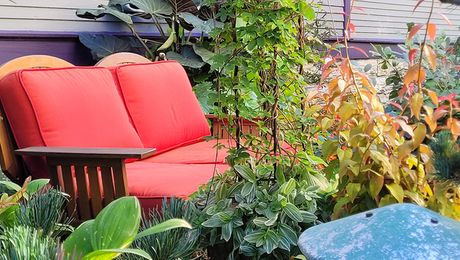











Comments
Lovely photo essay Billy! Great comments, too. It brought back memories of my visit to Strawberry Canyon - a special place indeed.
Treewriter: I kick myself for not having visited when I lived relatively nearby in SF. But I did have the Strybing (now the SF Botanical Garden) at my back door when I lived a few blocks away in the City. Thanks for popping in. It was getting lonely here at the comment section.
awesome--i love your pix of A.parryi. and yes, i used to live in alameda--but had no interest in gardening at the time--oh, how i missed out on so many great places!
Their Lapagerias must not have been in bloom. Their collection is world class!
love your tour! Thanks for sharing your awesome pics!
I thoroughly enjoyed your mini tour of the Berkley Garden, must go the next time Im up there... I can just barely contain my excitement, I look forward to class on Monday!!
Great essay Billy! You have artists eye which shows in your photos. I lived next to Strawberry Canyon for 4 years, (in an earlier life). I wasn't interested in plants then, just survival. Thanks for opening my eyes to the need for a trip to Bazerkley.
I have been the UC Berkeley Bottanical Gardens, it was last year in November. It was not much money to get in, and I wish my companions and I had had more time to explore, we had to leave early in order to drive back to LA before dark. It was well worth the 3-4 hours we spent there, tho. Be prepared to walk a lot. The California area is probably the largest single area, with paths resembling hiking trails. There are many 'greenhouses' which are enclosed to replicate more tropical climate...and in one there is an actual honeybee hive.
I was interested in the Australian area and had to go through the Asian area to get to it. There are occasional rest areas with benches and viewing platforms. One could easily spend a whole day there...and just skim the surface. This is a place that merits return visits.
Log in or create an account to post a comment.
Sign up Log in